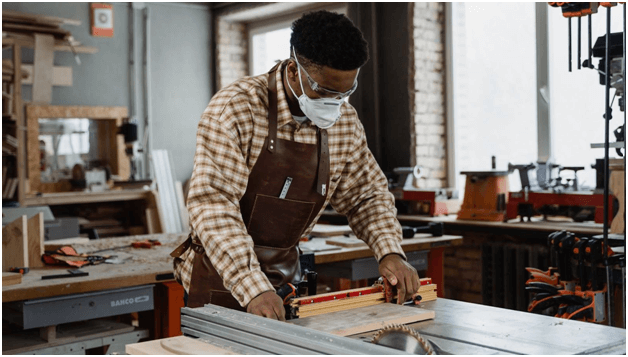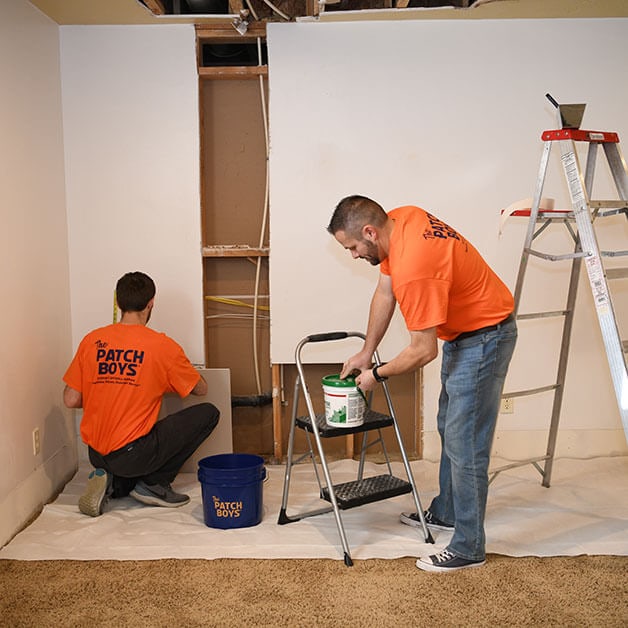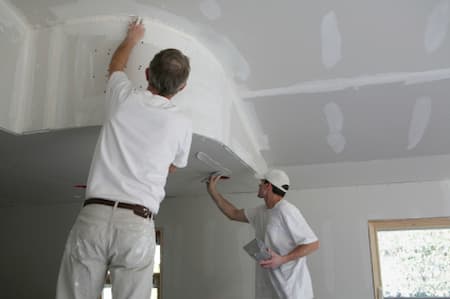Effective Drywall Repair Techniques to Restore Your Walls
Effective Drywall Repair Techniques to Restore Your Walls
Blog Article
Full Overview to Reliable and Trustworthy Drywall Installation
Drywall installment is an essential element of any building or remodelling task, demanding a precise technique to ensure both effectiveness and dependability. It is necessary to check out the subtleties of each action in the procedure, as they jointly add to the overall success of the drywall installment.
Vital Tools for Drywalling
When starting a drywall setup job, having the right tools is vital for achieving an expert coating. Important tools include a drywall knife, measuring tape, and a T-square, which are essential for exact measurements and smooth cuts. A drywall lift is additionally highly useful, especially for ceiling setups, permitting easier handling of heavy panels.
For securing the drywall, a cordless drill and drywall screws are needed. The drill should be furnished with a drywall little bit to make certain effectiveness and precision. In addition, an essential tool is the drywall saw, which facilitates reducing around other barriers and electrical outlets.

Moreover, safety equipment such as shatterproof glass and a dust mask are important to make certain individual security during the installation procedure. Using the right tools not only improves the high quality of the setup however also simplifies the workflow, making the job more efficient total.
Preparing the Room

Following, examine the problem of the ceilings and walls. Repair any type of existing damage, such as holes, splits, or peeling off paint, to guarantee a smooth and also surface for drywall application. In addition, look for electrical outlets, plumbing lines, and heating and cooling ducts, marking their locations to avoid complications during installation.
It is additionally vital to gauge the room precisely, establishing the measurements of the wall surfaces and ceilings to determine the appropriate quantity of drywall required. Produce a thorough plan that includes the design and alignment of the drywall panels.
Installation Methods
Effective installation methods are critical for achieving an expert surface in drywall tasks. Correct measurement and cutting of drywall sheets are fundamental steps. Constantly measure the wall surface room accurately, enabling for any type of switches or electrical outlets. Make use of an energy blade for clean cuts, scoring the paper face and breaking the board along the racked up line.
When hanging drywall, begin from the leading and job downward, making certain that the lengthy side of the board is vertical to the framing. Secure the sheets with screws instead of nails, which provide greater holding power and reduce the risk of standing out. Location screws every 12 inches along the edges and every 16 inches in the field of the board.
For edges, make go right here use of edge beads to accomplish sharp, clean sides. When mounting on ceilings, make use of a drywall lift or have a companion help in holding the sheets in area (drywall contractor). Maintain a void of concerning 1/4 inch above the floor and ceiling to suit development and tightening
Completing Touches

Begin by using joint tape over the seams. This can be either paper or fiberglass harmonize tape, with paper being favored for its toughness. When the tape remains in location, it's time to apply the first coat of joint substance, also recognized as mud. Utilize a 10 to 12-inch taping blade to spread the compound evenly over the taped joints, feathering the edges to mix with the surrounding drywall.
Enable the substance to dry thoroughly, usually 1 day. After drying out, sand the surface area gently with fine-grit sandpaper to remove any flaws. drywall installation. Repeat the mudding and fining sand process, normally a couple of layers, making certain each layer is flush and smooth with the drywall surface area
Usual Mistakes to Prevent
Lots of Do it yourself enthusiasts encounter mistakes during drywall installation that can compromise the final outcomes. One common mistake is failing to properly cut and gauge drywall sheets.
An additional constant mistake is incorrect fastening. Utilizing too couple of screws or nails can bring about loosened drywall, while overdriving fasteners find can trigger the paper to tear, compromising the structure. It's crucial to keep consistent spacing, normally every 16 inches, and to make sure that bolts are flush with the surface area.
Moreover, not addressing dampness concerns before installation can result in mold and mildew growth and architectural damages. Always assess the setting and usage moisture-resistant drywall in high-humidity areas.
Final Thought
Effective and reputable drywall installation requires careful focus to information throughout the process. Staying clear of common mistakes even more adds to a specialist outcome, emphasizing the significance of precision and technique in successful drywall projects.
It is vital to discover the nuances of each step in the process, as they collectively contribute to the overall success of the drywall setup.When beginning on a drywall setup project, having the right tools is essential for accomplishing an expert surface.For fastening the drywall, a cordless drill and drywall screws are required.Appropriately preparing the room is crucial for an effective drywall installment.Efficient setup methods are important for attaining a specialist surface in drywall jobs.
Report this page